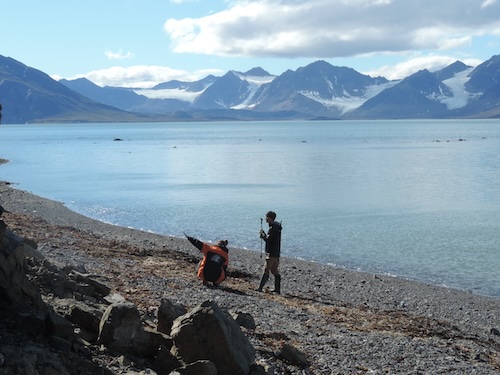Research
Published 12 February 2024New evidence changes key ideas about Earth’s climate history

A new study published in Science resolves a long-standing scientific debate, and it stands to completely change the way we think about Earth's climate evolution.
This story was first published here.
The research debunks the idea that Earth’s surface (across land and sea) has experienced really hot temperatures over the last two billion years. Instead, it shows that Earth has had a relatively stable and mild climate.
Temperature is an important control over chemical reactions that govern life and our environment. This ground-breaking work will have significant implications for scientists working on climate models or questions surrounding biological and climate evolution.
“Knowledge of temperatures in the past can help us understand how the Earth’s climate system works and provide insight into the conditions that allowed for the origin and evolution of life,” says University of Waikato geochemist and lead author, Dr Terry Isson.
Understanding past temperatures and the evolution of life is not an exercise in history or pure intellectual curiosity. Research on past climate is important for researchers looking to understand present climate and long-term future scenarios.
“We can’t use our planet as a large-scale lab. Looking to the past provides a way to understand the processes that regulate the Earth’s climate.”

Dr Isson and Ms Rauzi working on related research in Svalbard
In the work Dr Isson and PhD student Sofia Rauzi adopted novel methods to illuminate a history of Earth’s surface temperature.
They utilised five unique data records derived from different rock types including shale, iron oxide, carbonate, silica, and phosphate. Collectively, these ‘geochemical’ records comprise over thirty thousand data points that span Earth’s multi-billion-year history.
To date, the study is the most comprehensive collation and interpretation of one of the oldest geochemical records – oxygen isotopes. Oxygen isotopes are different forms of the element oxygen. It is also the first study to use all five existing records to chart a consistent ‘map’ of temperature across an enormous portion of geological time.
“By pairing oxygen isotope records from different minerals, we have been able to reconcile a unified history of temperature on Earth that is consistent across all five records, and the oxygen isotopic composition of seawater,” says Dr Isson.
The study disproves ideas that early oceans were hot with temperatures greater than 60°C prior to approximately half a billion years ago, before the rise of animals and land plants. The data indicates relatively stable and temperate early-ocean and temperatures of around 10°C which upends current thinking about the environment that complex life evolved in.
The work produces the first ever record of the evolution of terrestrial (land-based) and marine clay abundance throughout Earth history. This is the first direct evidence for an intimate link between the evolution of plants, marine creatures that make skeletons and shells out of silica (siliceous life forms), clay formation, and global climate.
“The results suggest that the process of clay formation may have played a key role in regulating climate on early Earth and sustaining the temperate conditions that allowed for the evolution and proliferation of life on Earth,” says Dr Isson.
Overall the work provides new evidence of the Earth’s climate and geochemical history that needs to be better understood to inform and update current ideas and research around climate and evolution.
Dr Isson concludes, “The results provide us with an impetus to deepen our understanding of how life both responds to, and shapes climate on Earth.”
Dr Isson's research has been funded from a Rutherford Discovery Fellowship and a Marsden Fast Start Grant.
Additional information: Link to the original article
Additional information: Link to the Science paper
RESEARCHER
Dr Terry Isson
ORGANISATION
The University of Waikato
FUNDING SUPPORT
Marsden Fund and Rutherford Discovery Fellowship
CONTRACT OR PROJECT ID
MFP-UOW2010 and RDF-UOW2201
